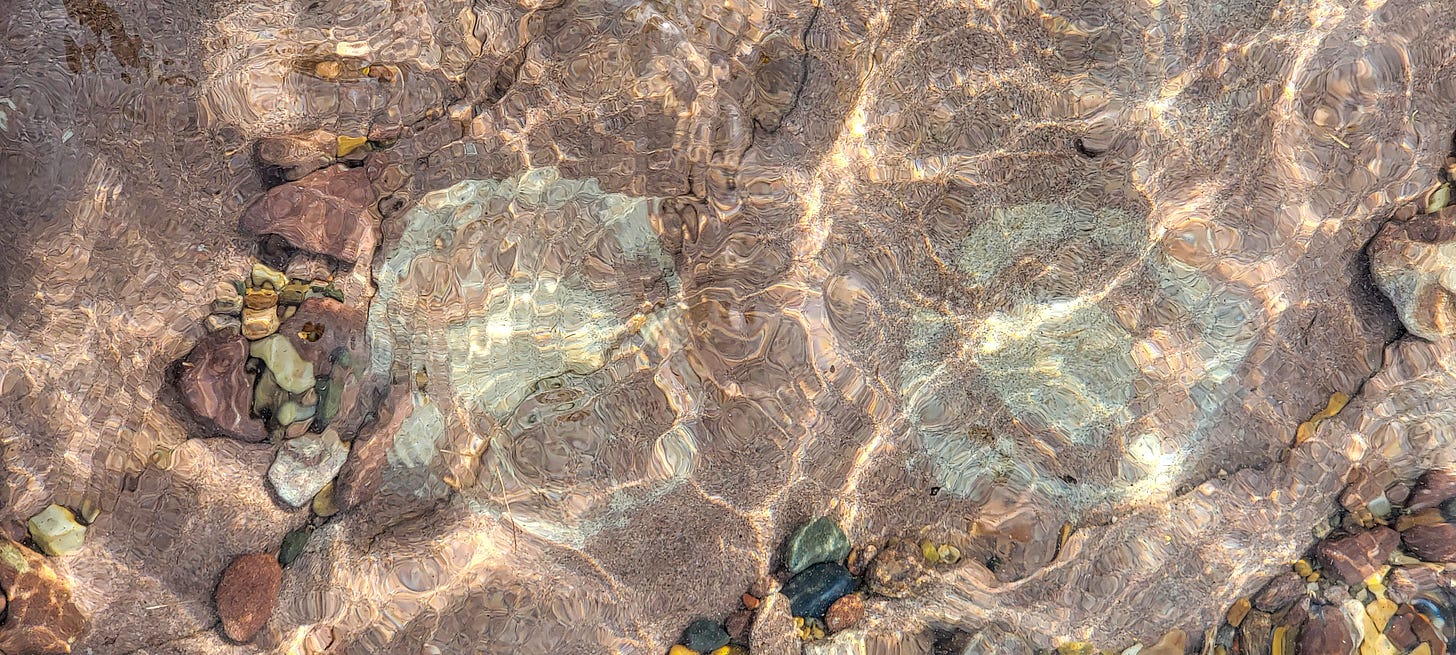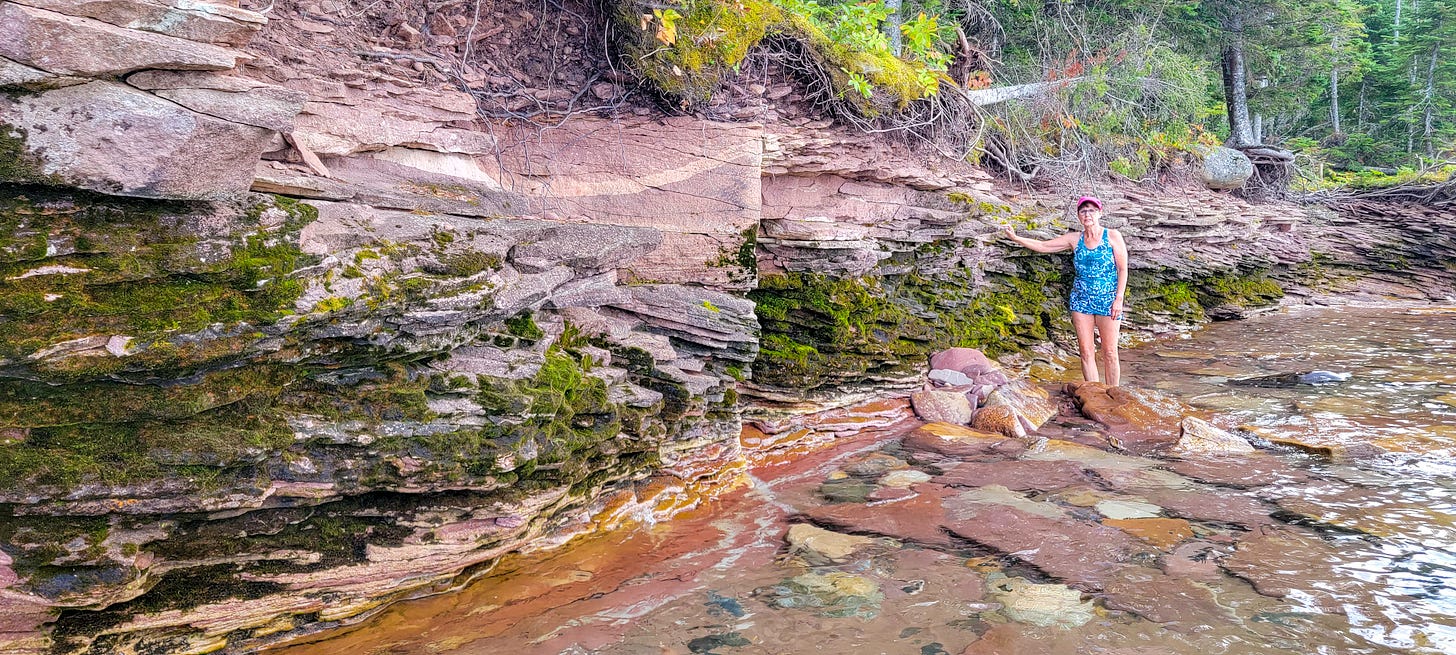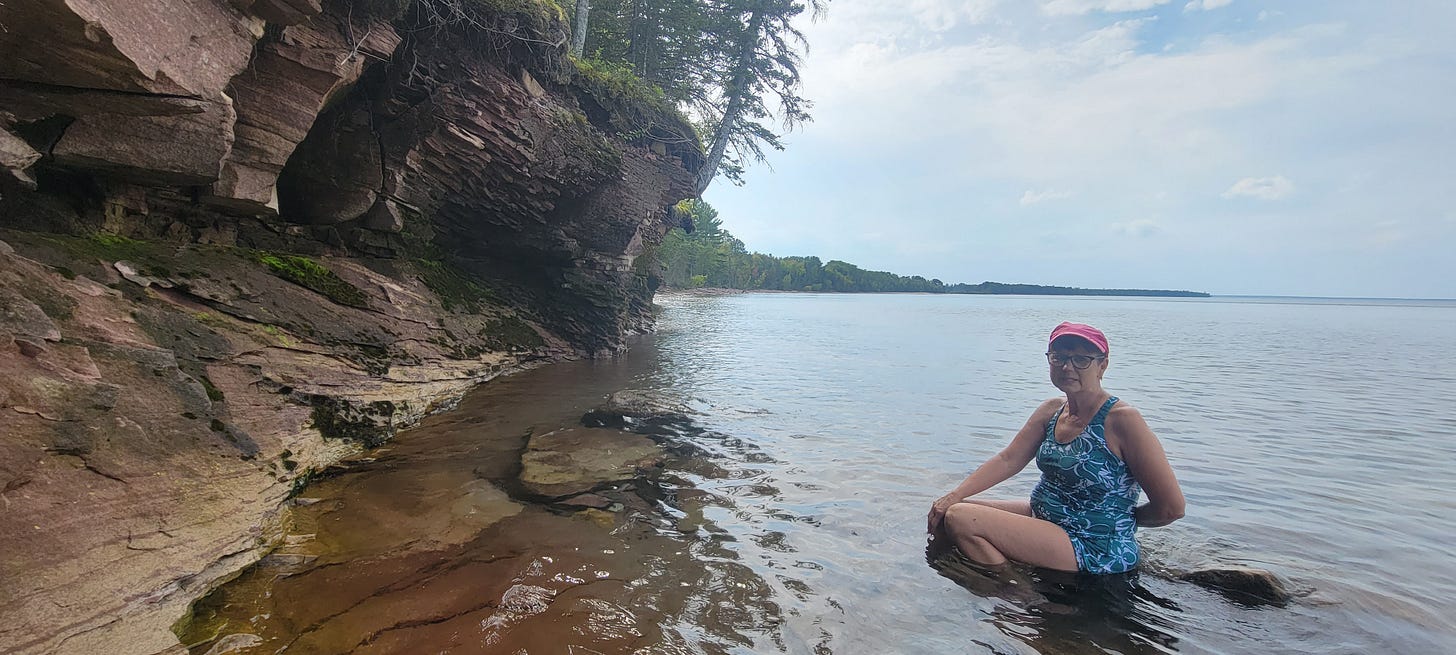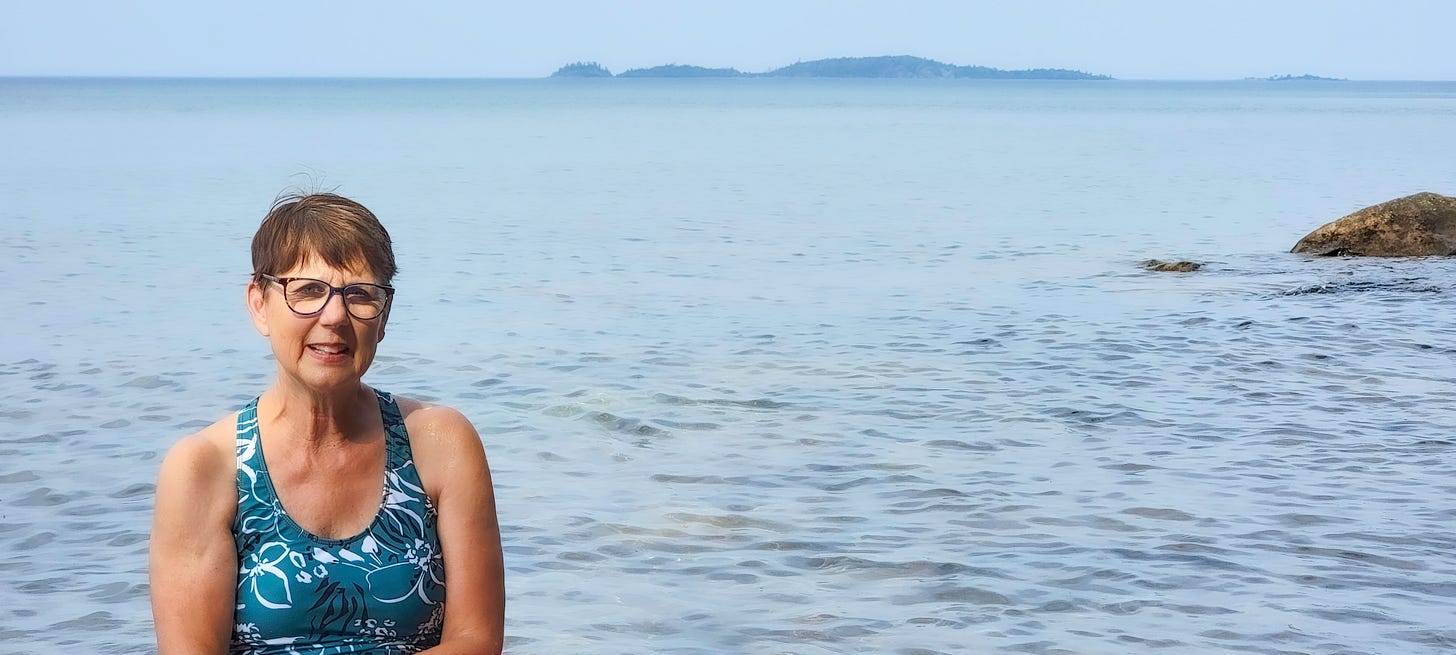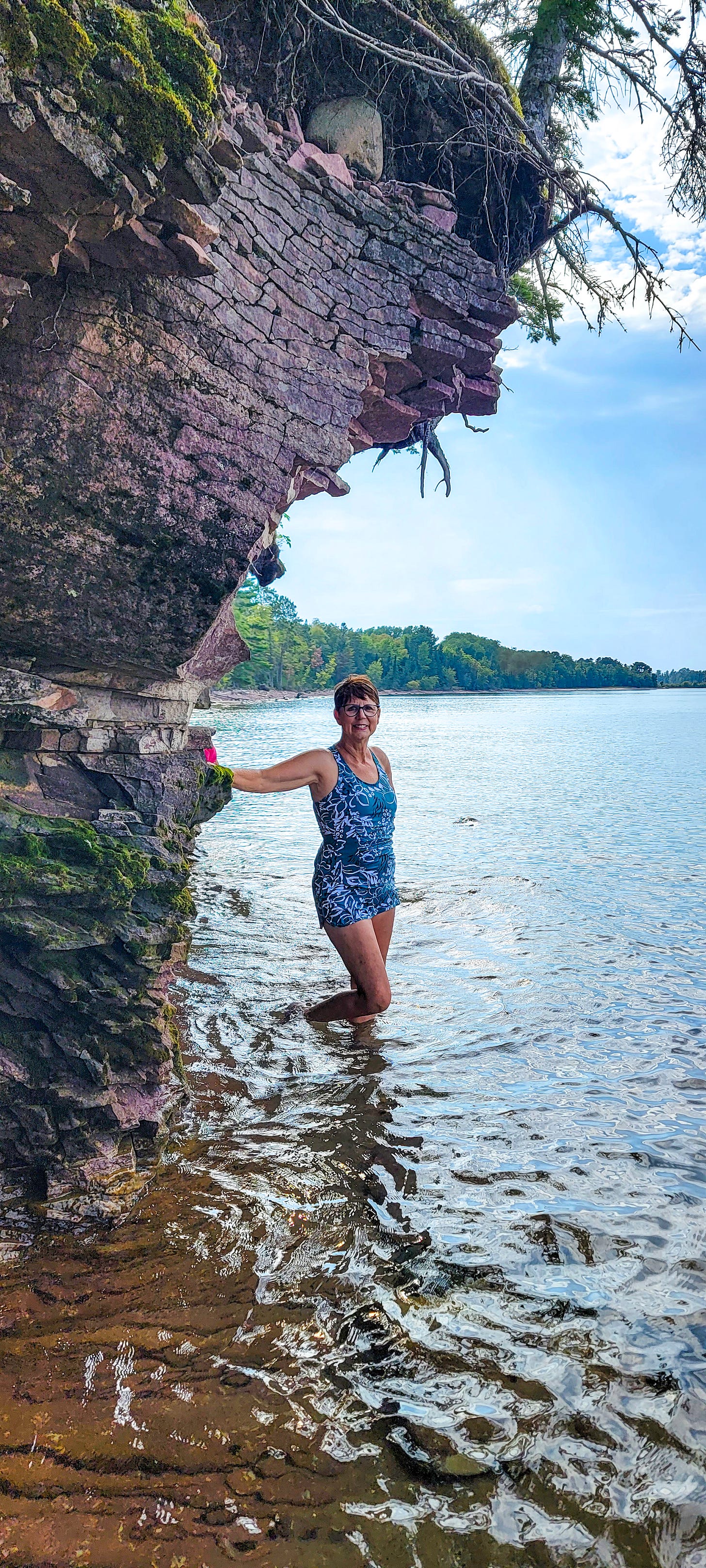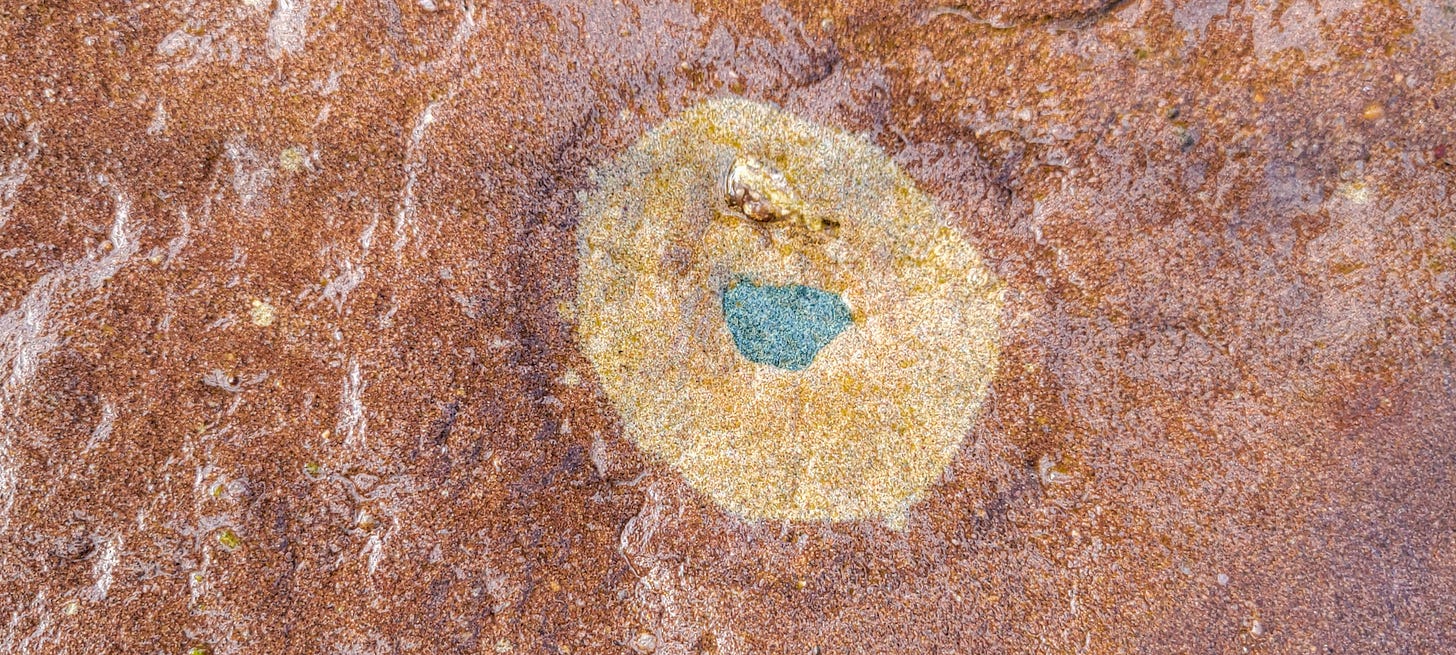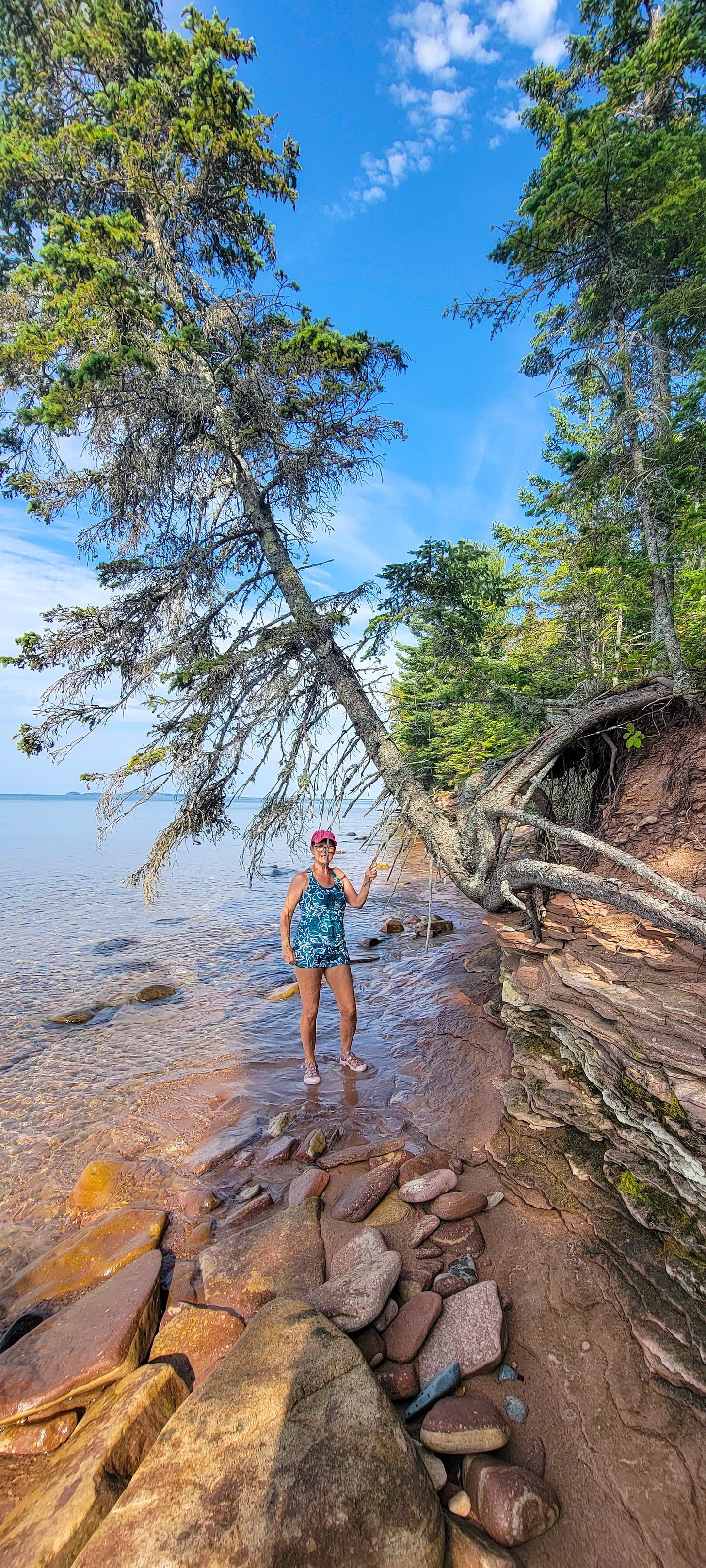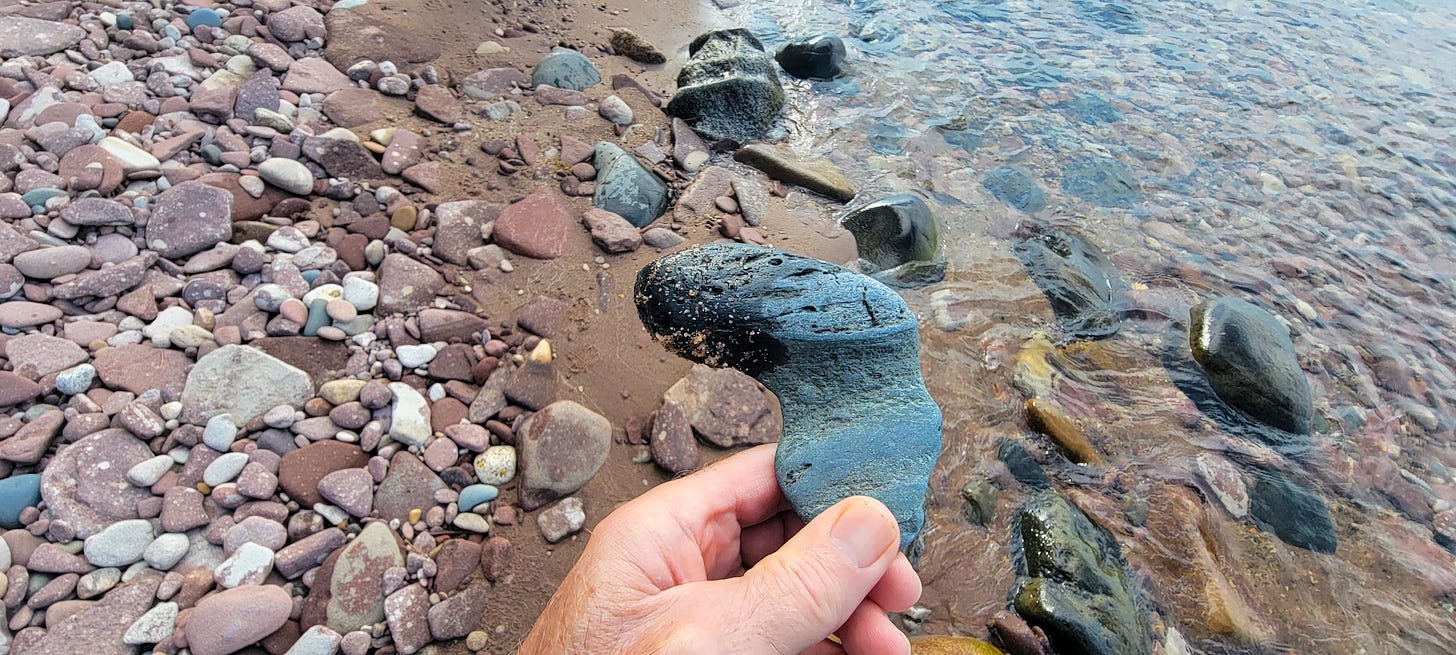Summer's Home Stretch
Labor Day provides the signal that summer has reached its home stretch. This year’s holiday found us in a heat wave with temperatures over 90 degrees. We enjoyed a barbecue at our friend Dar’s place with an eye on hitting the beach the following day at the mouth of the Huron River.
With kids heading back to school, there always seems to be a bit of a lull with the tourist activity after the holiday. This was true to form on Tuesday as there were only a few vehicles present when we hit the beach.
With a breeze out of the southwest, we needed to contend with some flies along the way. Ideally, a west wind like we had on Sunday at Agate Beach would have been perfect for taking them out of the picture, but sometimes you just have to go with the hand you are dealt! When we needed to escape the occasional cloud of flies, we dashed out into Lake Superior which was surprisingly warm considering that wind was blowing off the shore.
Julie is big on cleaning up beaches when we hike them. In this instance, she quickly founded a discarded ammunition container that would serve as a trash receptacle.
As we headed eastward from the mouth of the river, the sandy beach became intermixed with sandstone which presented really cool patterns in a number of places.
Farther down the shore a sandstone cliff would rise up from the lake.
At one point we would come across this very curious formation where we saw what appeared to be glacial erratic boulders atop the sandstone, but below the surface of ground above. This seemed so peculiar that I shared it with MTU Ph.D candidate James Juip as we wondered if the boulders might have been placed there by indigenous residents in some ancient time.
James shared the photo with Daniel Lizzadro-McPherson who is a Geospatial Research Scientist at MTU’s Geospatial Research Facility at the Great Lakes Research Center who shared these thoughts: “The rock photo you shared looks to be metamorphic - boudinage in schist or gneiss - whereby the more resistant silica-rich minerals (e.g., hornfels or quartz) represent the round bulging regions and the darker winnowed/recessed regions represent less competent mineral assemblages (e.g., micas and plagioclase) that were more easily eroded by wave-action in Lake Superior. Boudinage occurs during extension where a competent rock is stretched and deformed amongst less competent ground mass/county rock. The rock doesn't appear to be local, likely deposited here during the last glacial retreat.
Interesting geological stuff, but I don't think either photo represents early indigenous workings. Thank you for sharing!”
We ultimately found a great place to take a dip in the lake where we had a great view looking out toward the Huron Islands.
As we walked back toward the mouth of the river, we continued see cool geological features as well as interesting specimens.
You can check out my GoPro video from this hike along the Lake Superior shore on the Remote Workforce Keweenaw YouTube channel at this link:
Do you embrace winter and have the ability to work remotely? Consider locating in the Keweenaw where you will find ubiquitous natural beauty, no congestion, and lower crime! Not sure? Come UP for a workcation to check it out! Learn how at Visit Keweenaw at this link: https://www.visitkeweenaw.com/plan/trip-ideas-itineraries/workcations/ Visit Remote Workforce Keweenaw at https://remoteworkforcekeweenaw.com. Learn about those making the decision to locate here by following the Remote Workforce Keweenaw Facebook page at https://www.facebook.com/RemoteWorkforceKeweenaw.





